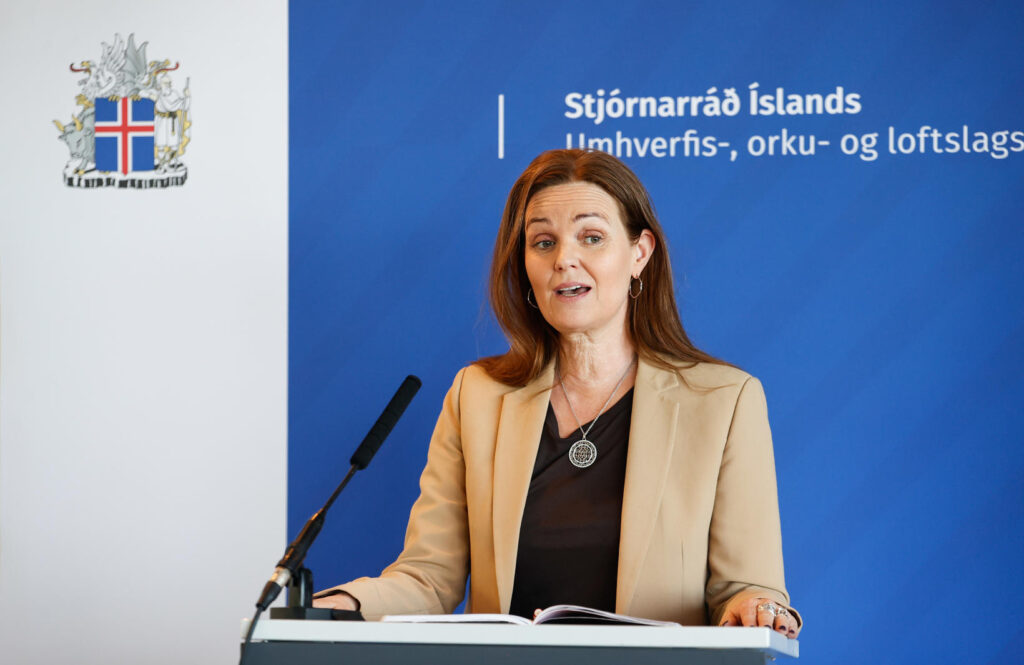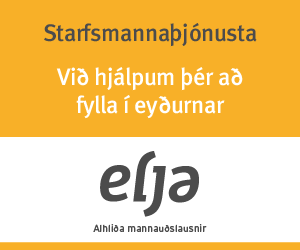The Ministry of the Environment, Energy, and Climate plans to invest up to ISK 1 billion in subsidies from 2025 to 2028 to support geothermal energy exploration and utilization in areas where electricity and oil are currently used for heating. If successful, the initiative is expected to reduce household heating costs and generate up to ISK 8 billion in financial benefits for the treasury.
The initiative was announced by Jóhann Páll Jóhannsson, Minister of the Environment, Energy, and Climate, in a recent presentation at the ministry.
Geothermal energy: A more equitable future
Jóhannsson highlighted Iceland’s unique position, with over 90% of households already benefiting from geothermal heating. However, nearly 10% of homes still rely on costly and inefficient heating methods.
“This disparity is unfair and needs to be addressed swiftly. That’s why this initiative is called Geothermal Equal—it aims to level the playing field,” he stated.
Beyond lowering household heating costs, the expansion of geothermal energy will also benefit businesses, municipalities, schools, and nursing homes in colder, more remote areas.
A strategic investment with multiple benefits
The government’s 1 billion isk. kr. investment is a strategic decision aimed at tackling multiple challenges at once, Jóhannsson explained.
“This is a significant amount of money, and allocating it to this initiative over others is a deeply political decision. However, the potential benefits make it clear that this investment is both rational and necessary,” he said.
The initiative is expected to promote regional economic balance, improve energy security and efficiency, and accelerate Iceland’s energy transition and climate goals.
Equivalent to powering 50,000 electric cars
Jóhannsson illustrated the potential impact of the initiative with a striking comparison: If 20% of the electricity currently used for electric heating in homes, businesses, and institutions were freed up, it would amount to approximately 120 gigawatt hours (GWh) of electricity.
“This is energy that could be redirected without the financial and environmental costs of building a new power plant,” he noted.
For context, 120 GWh is equivalent to the annual electricity consumption of 50,000 electric cars. If these vehicles replaced gasoline-powered cars, Iceland’s transportation emissions could be reduced by over 100,000 tons of carbon dioxide per year.
A projected ISK 8 billion benefit for the treasury
Financially, the initiative stands to provide significant savings. Currently, the government spends over ISK 2.5 billion annually on subsidies for electric heating in certain areas, totaling more than ISK 25 billion over the past decade (adjusted for January 2025 price levels).
Jóhannsson estimated that if half of the 120 GWh in electric heating were replaced with geothermal energy, the government’s subsidy expenses would decrease by ISK 540 million annually, while tax revenue from electricity would increase by ISK 300 million.
“In total, over the next ten years, this shift could generate ISK 8 billion in benefits for the treasury,” he stated.

Support from key stakeholders
The initiative’s implementation will be overseen by the Icelandic Climate and Energy Institute, led by Chairman Vilhjálmur Hilmarsson.
Also speaking at the presentation was Íris Róbertsdóttir, Mayor of the Westman Islands and Chairwoman of the Association of Local Authorities in Cold Regions, who voiced strong support for the initiative’s potential to transform heating infrastructure in rural and colder parts of Iceland.
Source: Icelandmonitor.mbl.is




